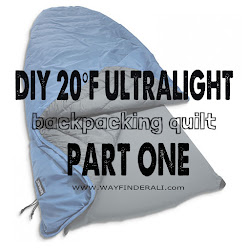The Kalliste by Werner Paddles is an elite performance, sleek and sexy carbon fiber paddle for low angle paddlers. This beauty will set you back about $400. Is it worth the money? Keep reading to find out why it's totally worth it.
Specs:
- Shaft: carbon fiber available straight or bent
- Blades: carbon fiber with foam core
- Ferrule style: 180 degree feathering adjustment right and left
- Weight: 23.25oz to 26 oz depending on length and shaft size/type
Features:
- Foam core blades: buoyant carbon fiber blades make each stroke smoother and lifting the blade out of the water at the end of the stroke effortless
- Dihedral power face: the three dimensional face of the blade eliminates the 'flutter' of the blade through the water which is present in paddles with smooth power faces. This makes your strokes more efficient and reduces wrist and arm strain.
- Smooth back face: a smooth back face makes for a smooth entry into and out of the water, unlike a fiberglass paddle which has a spine on the back face of the blade.
- Smart view adjustable ferrule: gives the look and feel of a single piece shaft with a tremendous range of feathering which allows you to adjust the feather to both your paddling style and wind. There is nothing to get caught on your clothes or gear, and you can alter the feathering quickly and easily on the water. I love the way it looks and feels like a single piece paddle.
In 2009 I got a job leading expedition sea kayaking trips along the outer banks of North Carolina. My
 |
| Me and my paddle on Core Sound on a nice calm day |
Why I upgraded
While your boat has a huge impact on your trip, your paddle is the most intimate part of the paddling experience. You touch it and move it all day. Putting it down means you won't go anywhere, and it sucks to be stuck using a paddle you can't wait to put down. It typically costs between $500 and $1000 for an upgrade to a better boat, but you can upgrade your paddle for between $100 and $200.
 |
| Tony with a Kalliste bent shaft in a brutal head wind |
Have you noticed that holding a heavy object close to your body is fairly easy, but extend your arms and hold it away from your body and it suddenly feels heavier? Paddles are the same way. The majority of the weight of the paddle is far away from our bodies in the shaft and blades, and we're having to move that weight against gravity. This requires more leverage than it would if it were close to our bodies.
Testing swing weight
Hold the paddle at the center of the shaft in one hand, out at arms length and then alternate bringing each blade toward and away from you.
This paddle has the lightest swing weight of any paddle I've ever used. With the exception of the delicate all-carbon bladed Ovation, it has one of the lightest swing weights on the market.
What this paddle feels like to use
The shaft is as smooth as silk in the hand, it just feels good to hold. Lifting the paddle is absolutely effortless. It moves through the water sleekly and steadily with no flutter.
The overall word I use to describe what it feels like to use this paddle is elegant.
How did I choose shaft size and style?
I opted for the small shaft because I have small hands and it weighs less. I do think that it is much easier to over-grip a smaller shaft paddle, so keep that in mind if you're a newer paddler.
A bent shaft is a great option for people who want to reduce joint strain, and I really wanted to get a bent shaft. I opted for a straight shaft for two reasons:
- I tried a bent shaft paddle, and couldn't find a place along the shaft where my hands felt comfortable.
- The straight shaft weighs less than the bent shaft
- Will you be paddling distances longer than a couple of miles?
- Do you want to lessen the strain on your joints when paddling?
- Are you paddling in a group with people who are stronger than you?
- Do you want a paddle you'll love to use?
- If you're a smaller paddler with a faster cadence, you should consider the Athena which is exactly the same but with slightly smaller blades.
If you answered yes, this could be a great match for you!








